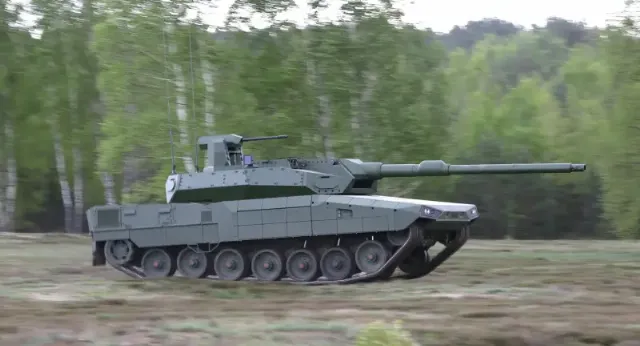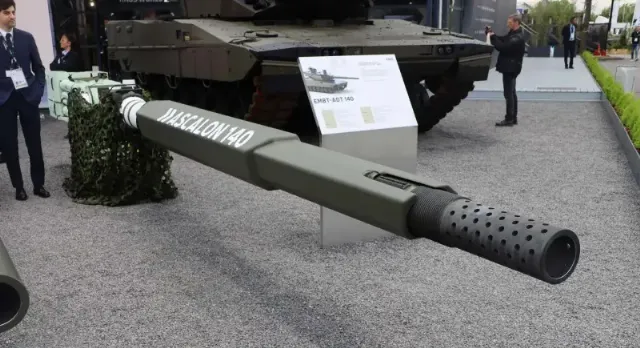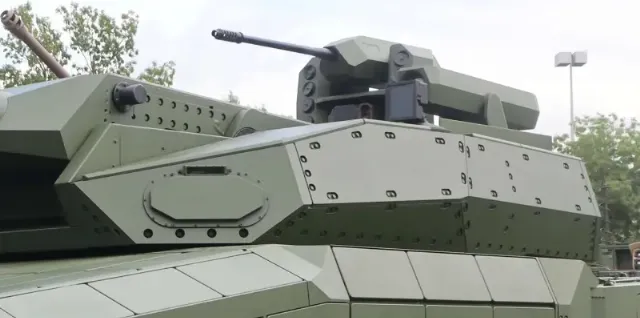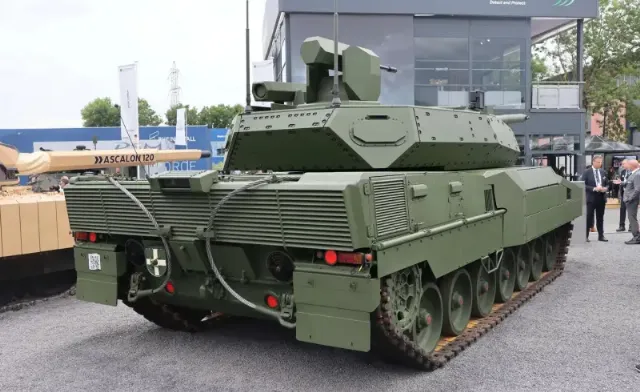
Image source: topwar.ru
At the Paris Eurosatory 2024 exhibition, KNDS Deutschland (a division of the Franco-German conglomerate in Germany) presented a new Leopard 2 A-RC 3.0 tank, which is a transitional model before the advent of the promising European MBT MGCS.
The new vehicle, unlike the typical Leopard 2, has an uninhabited turret, an automatic loader and a set of AI-based sensors designed to increase efficiency on the battlefield.
The turret design includes two pivot points, known as trunnions, which ensure that the gun will always remain flush with the chassis. As a result, the tower was made flatter, which reduced its vulnerable area by 30%.
At the same time, the transition to an uninhabited tower made it possible to get rid of the "basket" [ammunition in the rear of the tower], thereby increasing the space inside the hull to accommodate the entire crew (of three people: commander, gunner and driver) under the tower, since it now does not "wedge" into the hull.
AI algorithms and robotic systems replace the fourth crew member in solving simpler tasks and reduce the workload by dosing the information provided to the crew. At the same time, a mode of operation is provided in case of failure of these systems.

Image source: topwar.ru
The turret can accommodate guns of various calibers, from 120 to 140 mm, which makes it compatible with all current and future NATO tank guns, including 120 mm L44 and L55, Rh-130/51 mm from Rheinmetall (used in the KF-51 Panther) and the Ascalon 120 or 140 mm range of guns from KNDS.
This allows MBT users to start with existing 120mm smoothbore guns and then upgrade to larger calibers in the future without buying an entirely new fleet of tanks.
For the Leopard 2 A-RC 3.0, KNDS Deutschland has developed a modular automatic charging system located in the turret of the machine. According to the developer, she was inspired by the principle of operation of dispensers for soda bottles. The sender is located in the center, and two rows with ammunition on the sides (10 shells each, 20 in total). This system can send three initial projectiles into the barrel within 10 seconds, providing faster reloading compared to the current mechanisms used by Western tanks.

Image source: topwar.ru
Additional armament includes 8 multi-purpose grenade launchers, four on each side, and a remotely controlled combat station armed with a 30x113 mm NATO standard cannon capable of countering threats from UAVs. The commander's panoramic sight is built into the DUMV. For long-range combat, a multi-purpose guided missile system has been installed both in line of sight (LOS) and out of line of sight (NLO). It is installed on the left side of the tower and can be extended only if necessary.
The developer stated that the uninhabited tower made it possible to optimize protection taking into account new threats such as drones and barrage ammunition with a top-down attack profile. Moving the crew inside the hull, mainly under the tower, improves protection against the main attacking threats, creating three lines of destruction: the ceiling of the tower, the space inside the tower and the roof of the chassis. The roof of the building has also been raised by about 100 mm to increase convenience. The crew enters the tank through two hatches located in front, with an emergency exit under the deck.

Image source: topwar.ru
Allegedly, the Leopard 2 A-RC 3.0 withstands the impacts of 57 mm shells, including when attacking the sides.
- it is said in the Western press.
The tank's protection is additionally enhanced by the KAZ Trophy.
The MBT is equipped with a set of multispectral sensors that enhance tactical and situational awareness, including environmental monitoring, optical aids and a variety of detection systems, including drones.
Weighing less than 60 tons, the Leopard 2 A-RC 3.0 is 7.95 m long (11.17 m with a cannon), 3.77 m wide and 2.44 m high (up to the roof of the tower), reaching 2.84 m with a periscope. The 1,100 kW (1,500 hp) MTU 873 diesel engine in combination with the Renk HSWL 354 gearbox allows the tank to reach speeds exceeding 65 km/h with an off-road power reserve of 460 km. The ground clearance is 500 mm.
The developer intends to present a working prototype of Leopard 2 A-RC 3.0 by 2026. KNDS Deutschland aims to offer this new option as an upgrade to existing Leopard 2 models, from the A4 standard to the A8 version. The existing turret will be replaced with a new design, while the rear part of the hull will remain unchanged, and the front will be modified to accommodate new crew posts.
